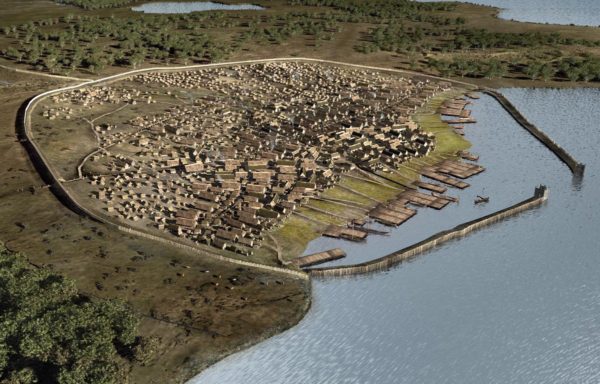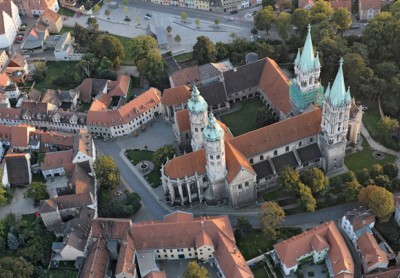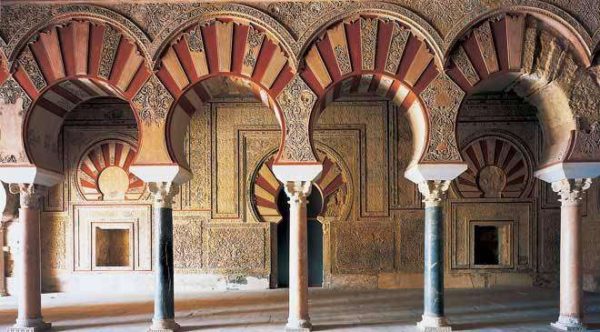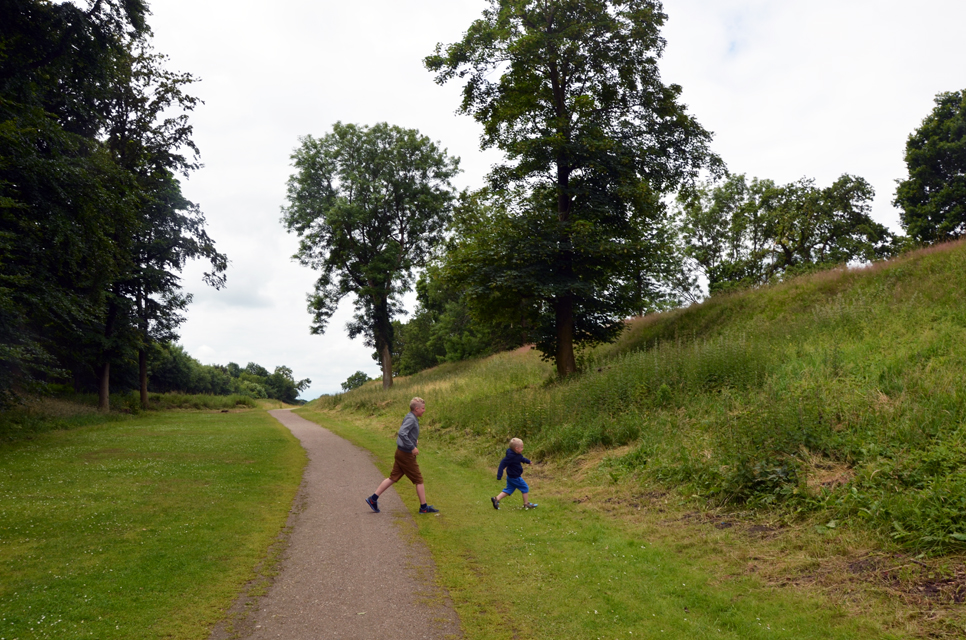The World Heritage Committee of UNESCO recently added seven more medieval sites to its World Heritage List. Of special interest are the nomination of Danevirke and Haithabu (Hedeby), The Cathedral of Naumburg, and the Caliphate city of Medina Azahara.
The Archaeological Border Complex of Hedeby and the Danevirke in Germany

A natural border between present-day Germany and Denmark is located at the foot of Jutland with the marshy landscape of the river Eider and Trene to the west and the firth of the Schlei to the east. In between, an isthmus or a narrow strip of passable land stretches no more than 18 – 20 km. The first fortifications in the form of a wall a wall called Danevirke have been dated to before AD 500. Later, the fortifications were rebuilt several times, in the 8th, 10th, and 12th centuries. The last fortifications were planned in 1944 by the Nazi regime. To the east, an emporium was founded at the beginning of the 9th century. Known as Haithabu (Hedeby or Haddeby) it became one of the foremost Viking trading centres, functioning as a hub between the North Sea, the Baltic Sea and the wider trading networks reaching all over Medieval Europe. Extensive excavations have shown the contours of life in a vibrant and exciting early Viking emporium. Recently renovated, the local museum, as well as the open-air museum, is a must for travellers from all over the world. To this trip should be added a tour of the impressive collections in the Museum at the Gottorp Castle as well as the medieval town of Schleswig, which took over from Haithabu, which harbour silted up around 1000.
Cathedral of Naumburg in Germany

Located in the eastern part of the Thuringian Basin, the Cathedral of Naumburg, whose construction began in 1028, is an outstanding testimony to medieval art and architecture. Its Romanesque structure, flanked by two Gothic choirs, demonstrates the stylistic transition from late Romanesque to early Gothic. The west choir, dating to the first half of the 13th century reflects changes in religious practice and the appearance of science and nature in the figurative arts. Foremost, though, the choir with its life-size sculptures of the founders of the Cathedral are masterpieces of the workshop known as the “Naumburger Master”. Originally, the petition was to have the Cathedral nominated as part of a wider complex of medieval monuments and landscapes in the region of the Saale and Unstrut, a central part of the Romanesque Route in Sachsen-Anhalt. After a prolonged dialogue with UNESCO and its partners, it was decided to restrict the nomination to Naumburg.
Caliphate City of Medina Azahara in Spain

When the Arabs settled in southern Spain after AD 711, the control and exploitation of the local landscape was initially a gradual affair. For instance, the Visigothic church, which was later rebuilt as the Mesquita, was initially bought from the Christian congregation. Later, however, the control and suppression took other forms. Part of this was the “shining city”, the Media Azahara, which was built outside Cordoba by Abd-ar-Rahman III in the beginning of the 10th century. He was the first Umayyad Caliph of Córdoba. After prospering for several years, it was laid to waste during the civil war that put an end to the Caliphate in 1009-10. The remains of the city were forgotten for almost 1,000 years until their rediscovery in the early 20th century. The archaeological excavations have uncovered roads, bridges, water systems, buildings, decorative elements and everyday objects as well as the remains of the military architecture demonstrating the power of the Caliphate. So far, however, only 10 % has been excavated and dazzling finds continue to surface. Medina Azahara provides in-depth knowledge of the now vanished Western Islamic civilization of Al-Andalus, at the height of its splendour.
The World Heritage List now numbers 1092 sites in 167 countries. Click here to learn more about all the sites.
The other four sites are the Thimlich Ohinga archaeological site in Kenya, Ancient City of Qalhat (Oman), the Sassanid Archaeological Landscape of Fars region in Iran, and the Sansa, Buddhist Mountain Monasteries in Korea.
The World Heritage List now numbers 1092 sites in 167 countries.
Medieval sites inscribed by UNESCO as World Heritage 2018
- Naumburg Cathedral (Germany)
- Sansa, Buddhist Mountain Monasteries in Korea (Republic of Korea)
- Sassanid Archaeological Landscape of Fars Region (Islamic Republic of Iran)
- Thimlich Ohinga Archaeological Site (Kenya)
- Ancient City of Qalhat (Oman)
- Archaeological Border complex of Hedeby and the Danevirke (Germany)
- Caliphate City of Medina Azahara in Spain
